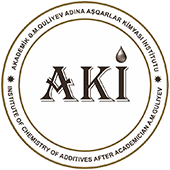In November 2020, Alphabet-owned AI firm DeepMind announced that it had cracked one of biology’s trickiest problems. For years the company had been working on an AI called AlphaFold that could predict the structure of proteins – a challenge that could prove pivotal for developing drugs and vaccines, and understanding diseases. When the results of the biennial protein-predicting challenge CASP were announced at the end of 2020, it was immediately clear that AlphaFold had swept the floor with the competition.
John Moult, a computational biologist at the University of Maryland who co-founded the CASP competition, was both astonished and excited at AlphaFold’s potential. “It was the first time a serious scientific problem had been solved by AI,” he says. “The prospect of having high quality computed structures for most proteins will be a terrific help in understanding many aspects of biology. For example, next time we have a pandemic, we could much more rapidly identify possible drug strategies.”
Earlier in 2020, predictions released by AlphaFold at the beginning of the Covid-19 pandemic provided a little hint of what was to come. In late January, DeepMind’s scientists used the program to map out a number of the Sars-CoV-2 virus’ proteins – predictions which were later experimentally confirmed to be accurate. This information was then used by virologists around the world, as they scrambled to understand how the virus was behaving.
Now 18 months on, DeepMind is moving on to more real-world applications for AlphaFold. The company has just announced a new partnership with the Geneva-based Drugs for Neglected Diseases initiative (DNDi). DNDi is a non-profit pharmaceutical organisation which has spent the last 18 years attempting to tackle some of the most deadly diseases in the developing world, sleeping sickness, Chagas disease, and Leishmaniasis.
It is the latter two diseases where DNDi hopes that AlphaFold can make the biggest difference. It has already had considerable success in finding new treatments for sleeping sickness. Most notably, it has replaced melarsoprol – a toxic compound which killed one in 20 patients – with the safe drug fexinidazole, as the new standard of care for the disease.
“We went from something that was awful to something that’s completely safe, and works in all forms of the disease,” says Ben Perry, a medicinal chemist and project leader at DNDi. “And in two years time, we hope to have a single dose cure. But unfortunately for Chagas disease and Leishmaniasis, this strategy hasn’t worked.”
This is because some parasites are particularly resilient. In particular, for Chagas disease – a life threatening illness which can lead to heart failure, and affects between six and seven million people, predominantly in Latin America – curing the patient requires eliminating every last microorganism from their cells.
Over the past 18 months, DNDi and a team of infectious disease researchers at the University of Washington, University of Dundee, and GlaxoSmithKline, have identified a molecule which appears to be capable of binding to a protein on Trypanosoma cruzi, the parasite that causes Chagas disease. This enables it to shut down the parasite and kill it.
These scientists want to study this protein’s structure to understand exactly how the drug is stopping the parasite from functioning. In the past this would have been a complex and laborious experimental task, taking many years, but through AlphaFold, DNDi and their collaborators have already received a computationally-generated prediction of its shape. Perry hopes that this knowledge could now be used to design more drugs which can bind to this protein in different ways, and kill Trypanosoma cruzi.
“This could allow us to crack Chagas disease and Leishmaniasis a lot more quickly than it looked like we were going to be able to do a couple of years ago,” says Perry. “If you can quickly get these protein structures, you can design multiple drug candidates, so you have lots of shots on goal for clinical trials.”
https://www.wired.co.uk


